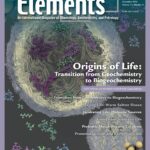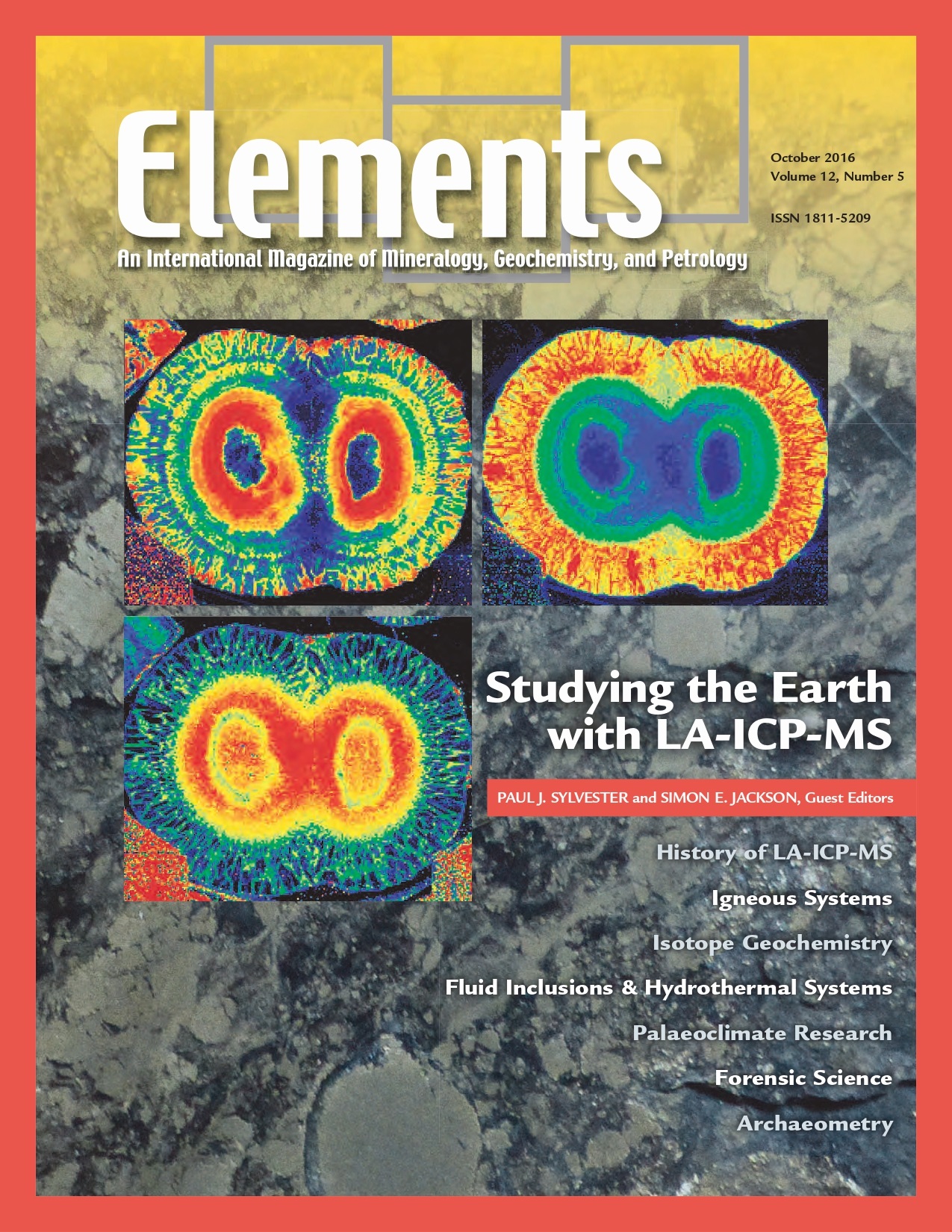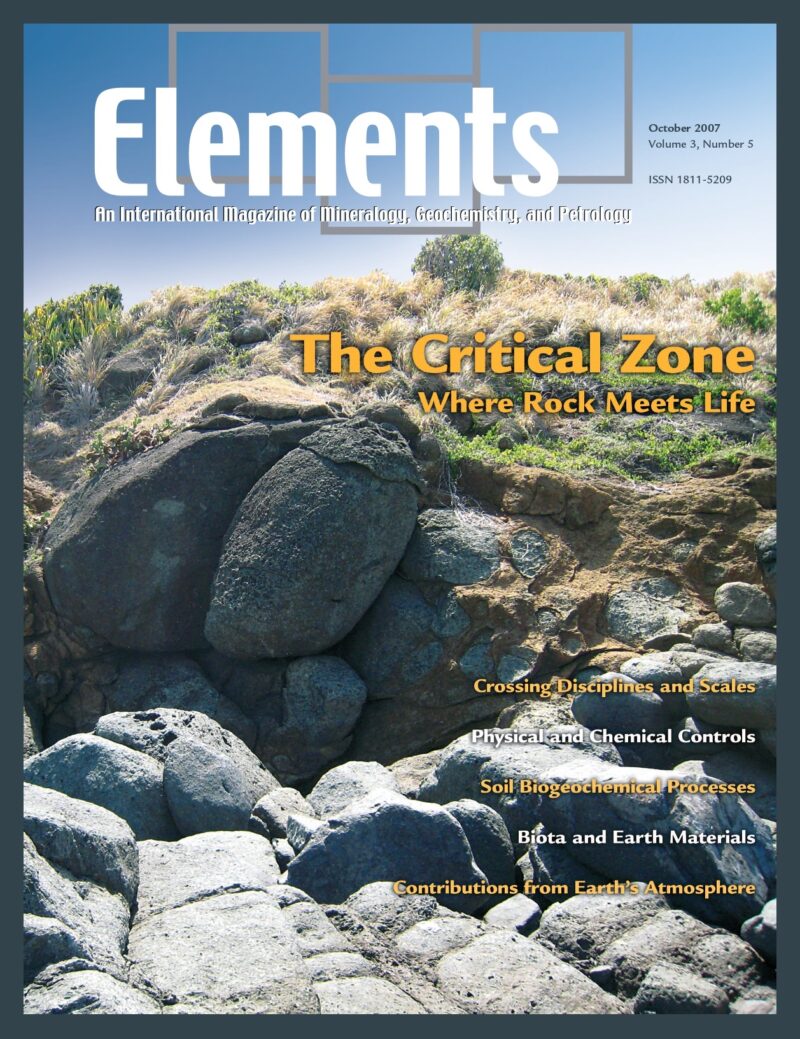
Geomicrobiology And Microbial Geochemistry, December 2015, Vol. 11, No. 6
June 28, 2024
Origins Of Life: Transition From Geochemistry To Biogeochemistry, December 2016, Vol. 12, No. 6
June 28, 2024Studying The Earth Using La-ICPMS, October 2016, Vol. 12, No. 5
$20.00
Laser ablation – inductively coupled plasma mass spectrometry (LA-ICPMS) is a mature, but still developing, micro-analytical technique that has allowed significant research advances in many areas of the Earth sciences. The method produces quantitative elemental and isotopic analyses on the micrometer scale of most solid, and some liquid, materials across most of the periodic table.
Studying The Earth Using La-ICPMS
October 2016, Vol. 12, No. 5
Laser ablation – inductively coupled plasma mass spectrometry (LA-ICPMS) is a mature, but still developing, micro-analytical technique that has allowed significant research advances in many areas of the Earth sciences. The method produces quantitative elemental and isotopic analyses on the micrometer scale of most solid, and some liquid, materials across most of the periodic table. A key strength of the method is that it can detect changing conditions or processes over time by analysis of growth zones or domains in minerals and other objects. Recent developments in rapid-wash out ablation cells and data handling software permit elemental and isotopic mapping of materials. Because both inorganic and organic materials can be analyzed, abiotic and biotic processes, and their interactions, can be studied. This issue of Elements highlights applications of LA-ICPMS across the broad range of disciplines of interest to the Earth, environmental, and biological sciences that now rely on the technique and their interdisciplinary nature.
Why You’ll Love Elements Magazine:
- Expert Contributors: Articles written by renowned researchers in the field of geoscience.
- Engaging Content: Join a community of readers who are passionate about Elements.
- Exceptional Quality: Each issue is printed on high-quality paper with stunning visuals and detailed illustrations that bring complex scientific concepts to life.
Order your copy of the October 2016 issue of Elements magazine today and study the Earth using LA-ICPMS.
Related products
-
On The Cutting Edge: Teaching Mineralogy, Petrology, And Geochemistry, April 2007, Vol. 3, No. 2
$20.00New advances in research on learning have important implications for teaching mineralogy, petrology, and geochemistry. Effective instructional practices are increasingly student centered, address diverse student learning styles, and employ a variety of active-learning strategies.
-
The Critical Zone, October 2007, Vol. 3, No. 5
$20.00The Critical Zone (CZ) encompasses all fluid, mineral, gaseous, and biotic components from the outer envelope of vegetation down to the lower limit of groundwater. It supports much of life on Earth.
-
Fluids in Planetary Systems, January 2005, Vol. 1, No. 1
$20.00Water and other geofluids play an important role in the geochemical and rheological evolution of the Earth and other bodies in the solar system. These fluids are responsible for the formation of hydrothermal mineral deposits, affect eruption behavior in volcanic systems and the geophysical properties of the mantle, and significantly affect the way in which rocks deform and fracture.




